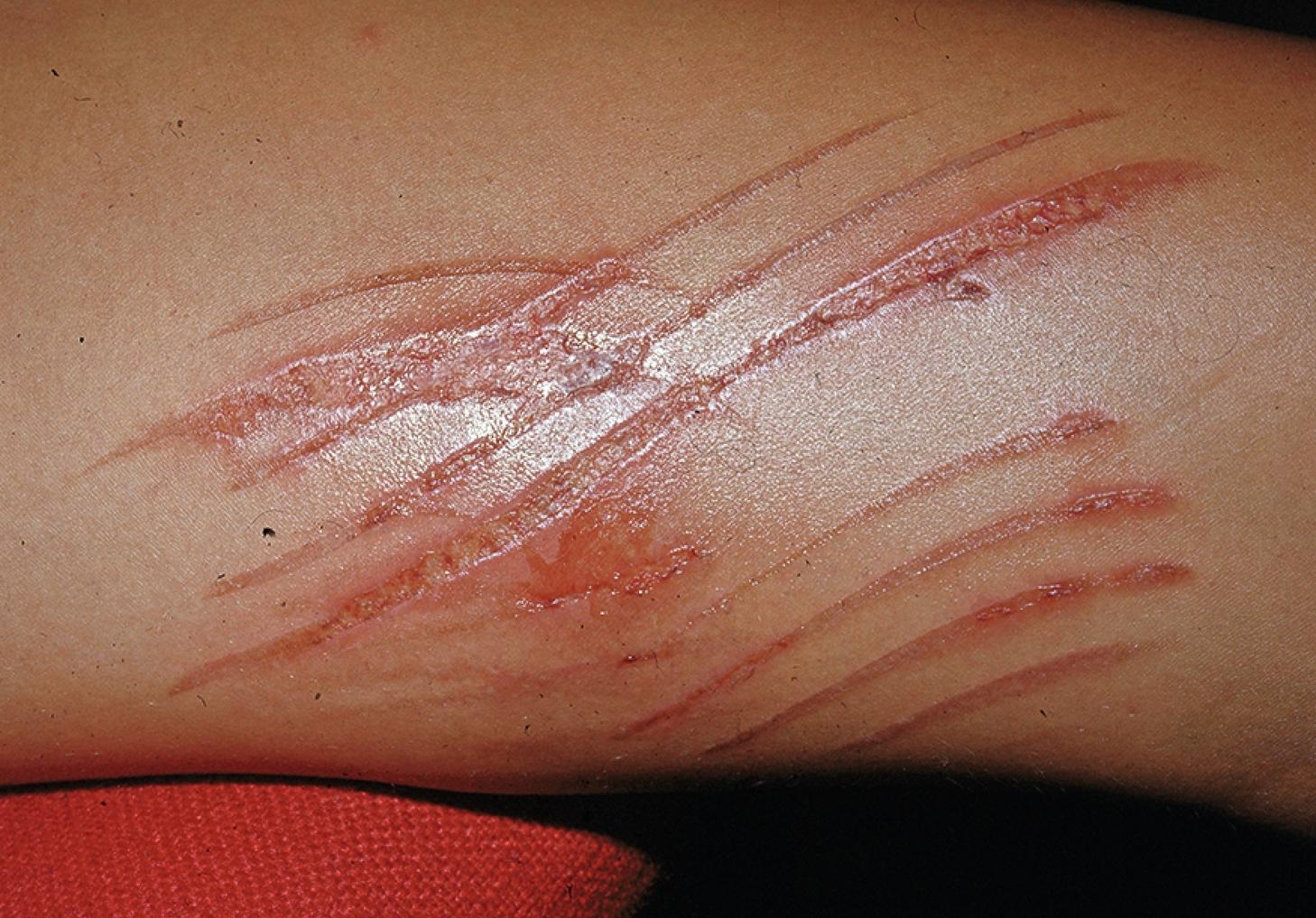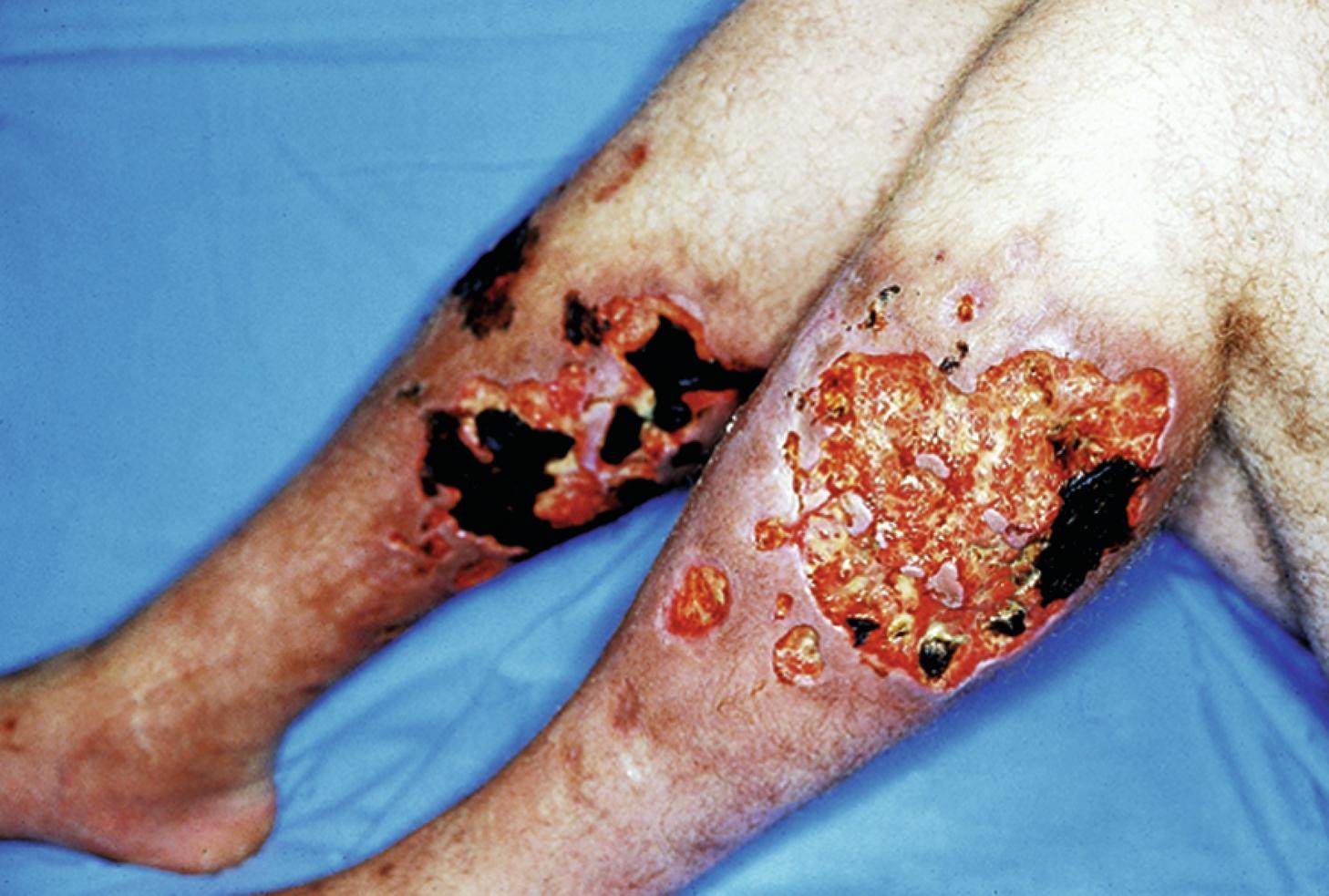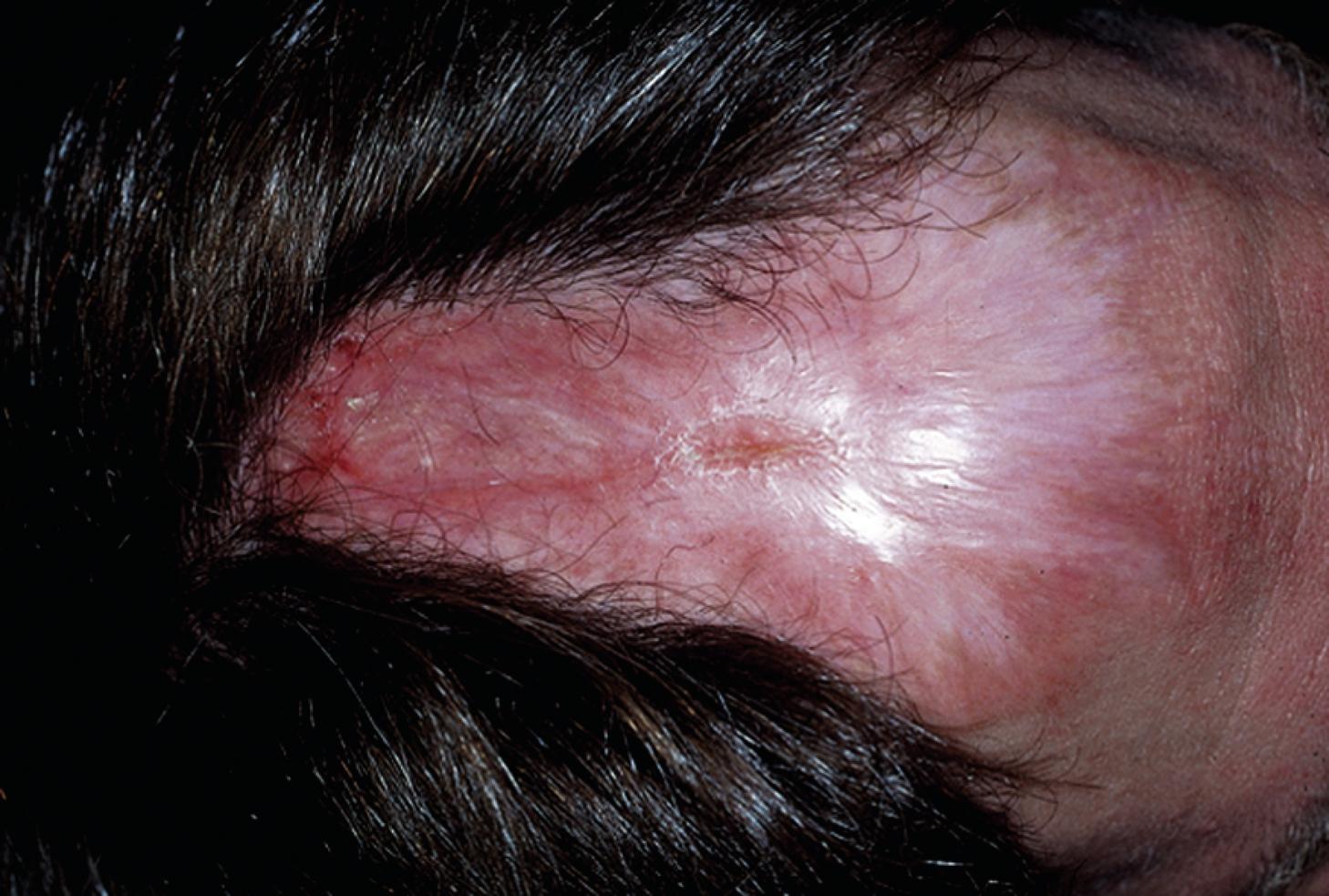Physical Address
304 North Cardinal St.
Dorchester Center, MA 02124
Up to 40% of all dermatologic patients have an associated psychiatric comorbidity.
Patients with cutaneous dysesthesia can present with many different complaints, but treatment is based on whether the symptoms are primarily pruritic or primarily painful.
When evaluating skin lesions that are self-inflicted, understanding the patient’s underlying motivation is essential for accurate diagnosis and treatment.
Patients with Morgellons present with a wide spectrum of ego-involvement, and maintaining a good doctor–patient relationship is paramount to successful treatment.
Dermatologists should not shy away from prescribing psychotropic medications and should make themselves familiar with the medications commonly used in psychodermatology.
Primary psychiatric disorders with dermatologic manifestations: In these conditions, the primary pathology is psychological in nature. Patients have no inherent issues with their skin, hair, or nails—all physical findings are self-induced. Examples include delusions of parasitosis, dermatitis artefacta, trichotillomania, dysmorphophobia, and neurotic excoriations.
Primary dermatologic disorders with psychiatric comorbidities : Patients with conditions such as acne, psoriasis, or vitiligo endure significant social stigma and decreased quality of life that can lead to the development of secondary psychiatric disorders such as depression, anxiety, or social phobia.
Psychophysiologic disorders : Psychophysiologic disorders are those dermatologic conditions such as psoriasis, atopic dermatitis, acne, and hyperhidrosis that are frequently worsened by psychological stress.
Cutaneous dysesthesia : Patients with cutaneous dysesthesia experience uncomfortable skin sensations with no primary skin pathology. They often describe their symptoms as burning, crawling, biting, stabbing, shocking, or itching. For this diagnosis, a workup for other possible organic causes must be negative, and patients must have no primary dermatologic findings.
While the exact prevalence is difficult to assess, it is estimated that up to 40% of dermatologic patients have some sort of psychiatric comorbidity. The ever-visible reminder of their disease and the social stigma associated with some conditions can have deleterious effects on patients’ psyche. Even when skin lesions can be hidden with clothing, it is well known that patients can still experience significant decrement in self-esteem and self-image.
Connor CJ. Management of the psychological comorbidities of dermatological conditions: practitioners' guidelines. Clin Cosmet Investig Dermatol . 2017;10:117–132.
Obsession : a persistent preoccupation with an idea or impulse
Compulsion : a persistent, repetitive behavior performed in response to an obsession
Phobia : an overwhelming, irrational fear that motivates individuals to avoid particular situations
Delusion : a fixed, false, idiosyncratic belief that is impervious to rational thought
Hallucination : a sensorial experience or perception without an actual stimulus
Cutaneous dysesthesia is an unpleasant sensation experienced by a patient that has no identifiable biologic cause. Cutaneous dysesthesia can be broadly separated into primarily pruritic and primarily painful sensations, but patients may also complain of burning, stabbing, or shocking sensations.
Glossodynia, burning mouth syndrome, vulvodynia, burning feet syndrome, atypical facial pain, and chronic scalp pruritus.
For patients complaining of primarily pruritic sensations, the tricyclic antidepressant (TCA) doxepin is often helpful after treatments such as topical steroids and antihistamines have failed. In order to maximize doxepin’s effect, it is important to titrate the dose based on individual tolerance. Patients taking TCAs at the same dose could have up to a 20-fold variation in trough levels due to differences in metabolism. Doxepin may be used at doses of up to 300 mg per day.
If the primary symptom involves cutaneous idiopathic pain, low-dose desipramine or nortriptyline may be efficacious. The use of TCAs as analgesics has been most well documented with amitriptyline; however, amitriptyline is commonly associated with intolerable anticholinergic side effects.
Beck K, Yang E, Koo J. Dose escalation of doxepin for intractable pruritus. J Am Acad Dermatol . 2018;79(3):e37.
Obsessive-compulsive disorders (OCDs) : Patients acknowledge being driven to self-inflict skin lesions through conscious repetitive actions.
Dermatitis artefacta or factitious dermatitis : Patients self-inflict skin lesions to satisfy a psychological need with no attempt for secondary gain.
Malingering : Patients consciously and deceitfully self-inflict skin lesions for secondary gain.
Dermatitis artefacta can mimic a variety of skin conditions, and the self-inflicted lesions vary widely in morphology and distribution. Patients often use foreign objects such as sharp instruments, caustic chemicals, or elastic bands to produce wounds. Depending on the method used, it is possible to see excoriations, blisters, burns, edema, ulcerations, purpura, and deep scars ( Figs. 67.1 and 67.2 ). Lesions are often bizarre and irregularly rectilinear ( Fig. 67.3 ). They are necessarily within reach.



Become a Clinical Tree membership for Full access and enjoy Unlimited articles
If you are a member. Log in here